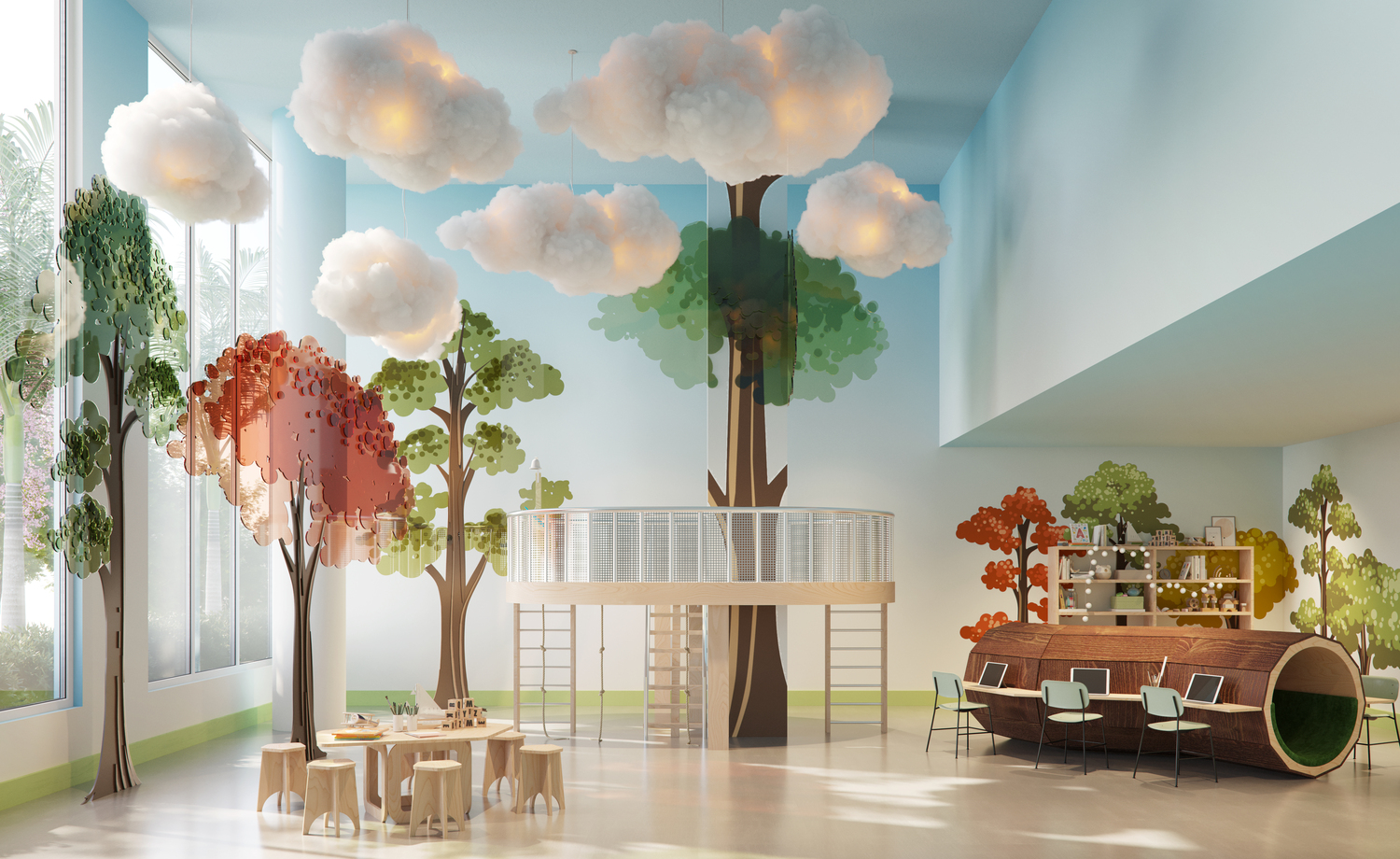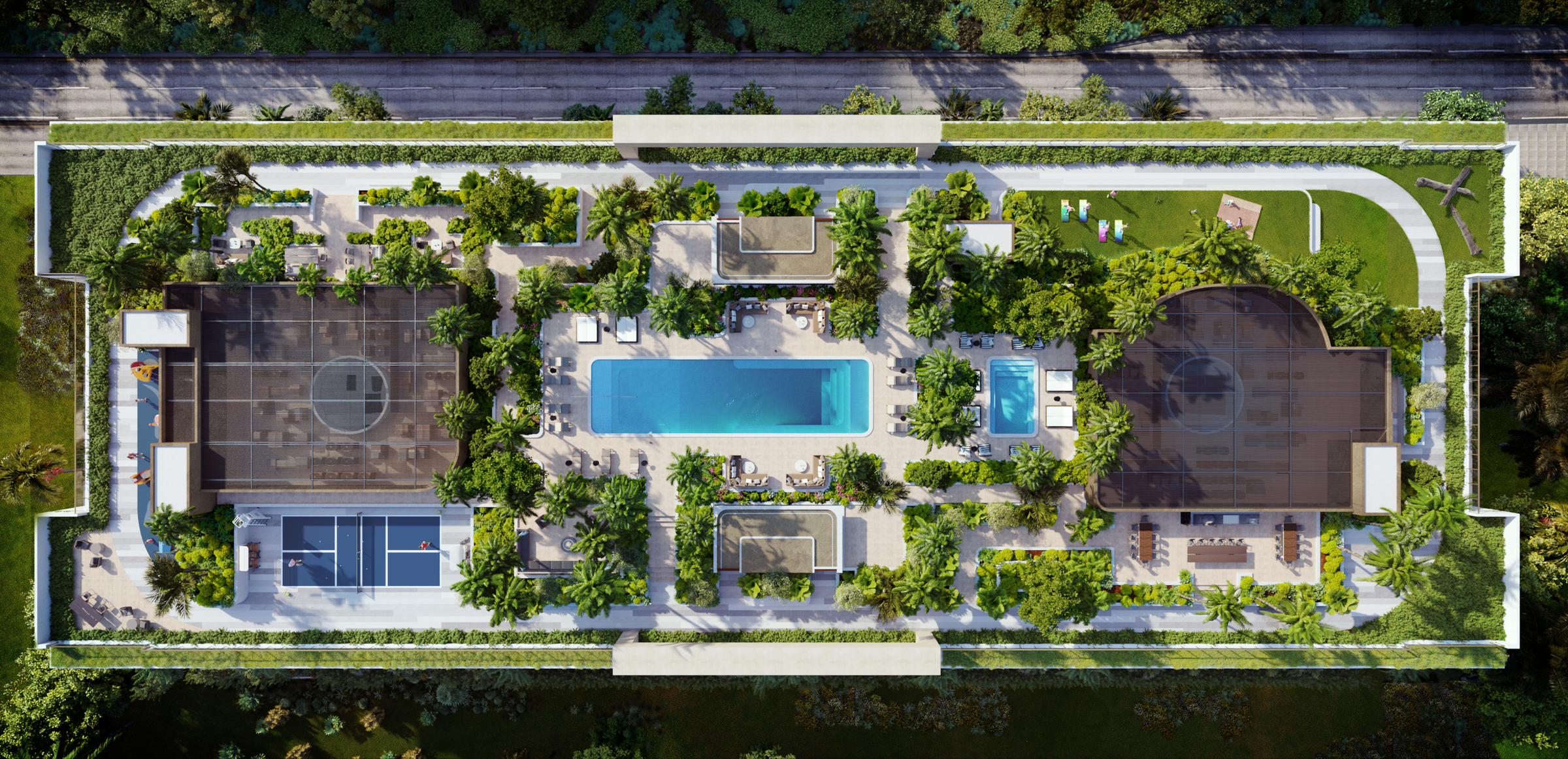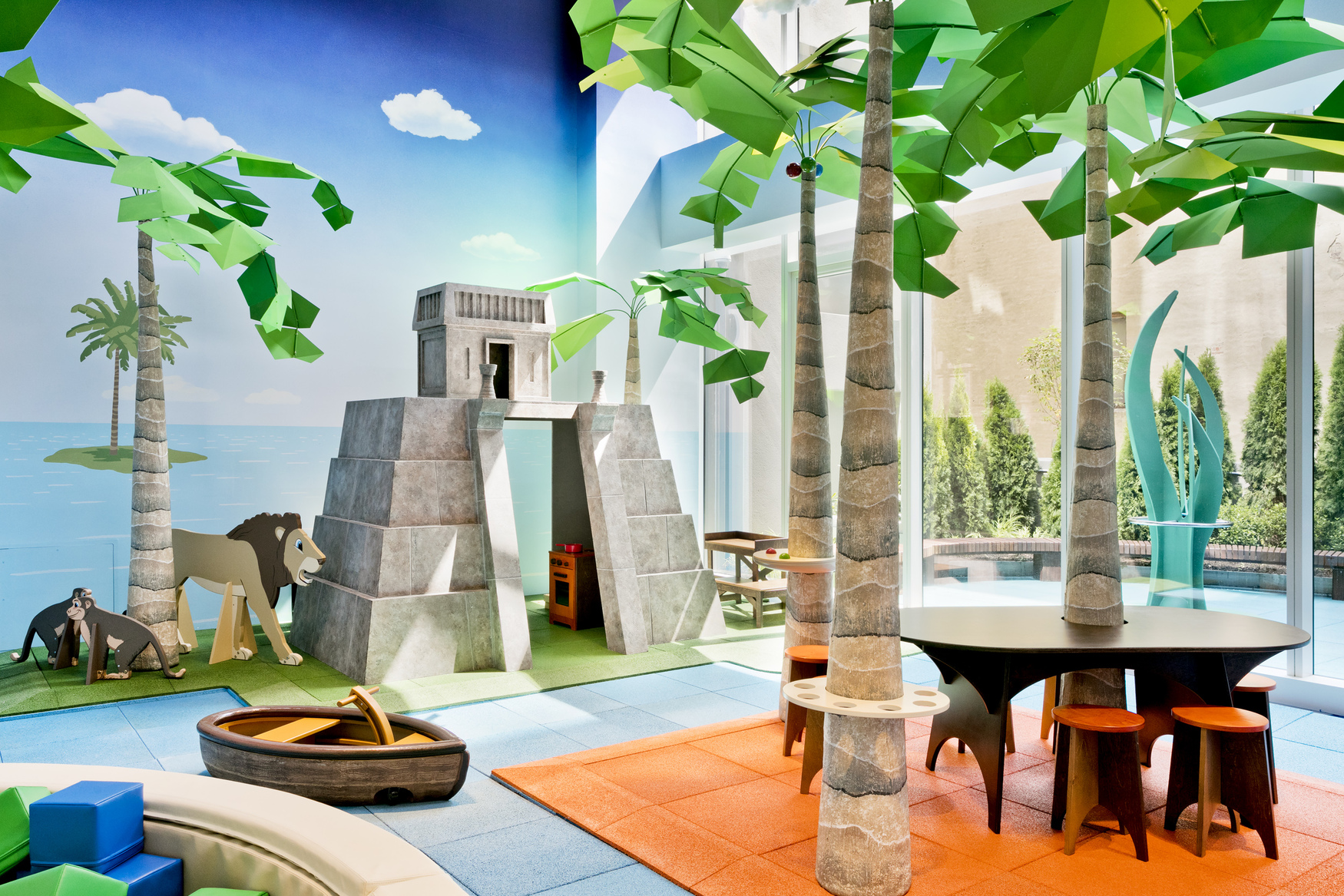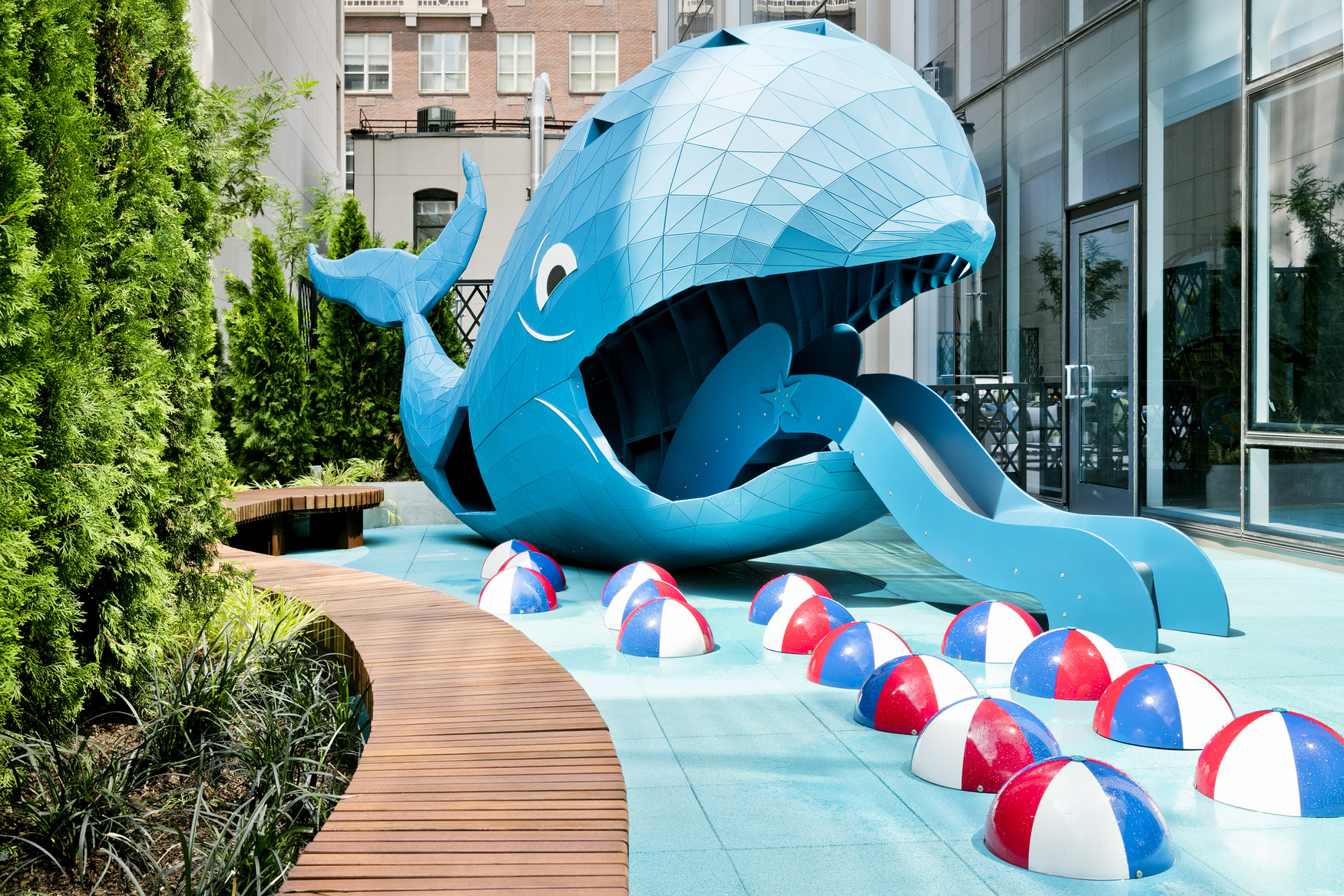As adults, perhaps a common shared childhood memory is going out to play once chores and other tasks have been done. Today, this is rare, especially for families in condominiums and apartment complexes. This may explain why extravagant in-house playrooms are suddenly popular, and, in recent times, have evolved into an emerging trend: luxury, custom-designed play areas for kids.
Don’t believe us? Just ask Silver Hill Atelier, a custom art and design studio that only recently completed an indoor and outdoor children’s play space for 2200 Brickell, a luxury property in Miami that includes a tree house and a pirate ship structure.

Silver Hill Atelier is rather experienced in creating unique structures since it was founded in 1979. Over the years, the New York-based firm has worked with restaurants and resorts like Planet Hollywood and Disney to create themed, distinctive spaces. To understand why more and more families are choosing to include custom-designed and built structures for children on their properties and in their homes, we turned to Michael Whiston and Norvel Hermanovski of the Atelier for some insight.
When did you start to notice this shift to custom-designed play areas for kids in luxury apartment buildings?
Though developers have previously been interested in the concept … we have seen it become more popular over the past few years as luxury real estate has skyrocketed, especially in South Florida.
What do you think brought about this trend?
Luxury real estate developers are constantly vying for their buildings to stand out to prospective residents. They want to show residents (that not only will they) feel cared for and at home at their properties, but that they will also have access to a range of amenities and services no other development can provide. Curated amenity spaces like our children’s play areas add an extra personal touch that gives buyers confidence their needs will be met and they will experience a high-quality lifestyle, no matter their age. That is a very attractive prospect, and as more luxury buyers witness the difference between organic and manufactured designs, more developers are hopping on the trend to meet their growing demand.

Are the requests for indoor or outdoor spaces?
Yes, we have received requests for both indoor and outdoor children’s spaces. At 2200 Brickell for example, we were tasked to build both types within the condominium so that everyone, rain or shine, can have a space to safely explore and play.
Can you take us through a brief description of your journey to designing custom play areas?
Since 1979, we have strived to build artwork and environments that tell a story through visuals and build connections. We began as a traditional mural-making company creating murals for Limited Express stores and later expanded to doing artwork, theming, and 3D work for restaurants and larger hospitality projects such as Hard Rock Café and Canyon Ranch. From there, the door was opened to working with residential developers, and we quickly progressed from mural work to designing entire interiors as the demand for custom spaces grew.
What’s your design process like?
We begin by sitting down with the interested developers and architects of a project to get an understanding of their building and vision. This includes learning the artistic background and inspiration for the project as a whole, their goals for the space we will create, and so on. Once we have a solid feel for the building and its needs, we focus that information into developing the creative designs for our play structures.
Why did you choose to design the play items/furniture yourself instead of going with already existing furniture?
As artists, we are passionate about bringing unique ideas to life. We see and honour the value within personalized craftsmanship and organic spaces, and we want all those who see, touch, and explore our designs to understand our work was crafted for them and their homes. Making play items and installations from scratch gives us the ability to convey this far more than we could with items we could purchase from a store. It also allows us to seamlessly mesh our installations with the existing aesthetic of their space, be it the room, building, or greater neighbourhood.

Let’s talk about your design for 2200 Brickell, Miami. What informed the final design?
At 2200 Brickell, we wanted to create two spaces that would remain true to Miami’s natural aesthetic while giving children room to have fun safely. With our indoor play space, we wanted to bring the outside inside by referencing the beautiful trees seen throughout Brickell. As such, we designed nature-inspired wooden play structures and artwork throughout the space and covered the walls with painted and sculptural trees. For the exterior space, we wanted to draw from Miami’s seafaring history and give children a chance to be their own captains of the sea with a nautical-themed playground, equipped with an interactive pirate ship.
What are some of the other designs you’ve done? Which is your favourite creation to date?
We have worked on various restaurant, corporate, and hospitality projects across the globe, including designs for Planet Hollywood, Disney Hong Kong, and Disney Tokyo. Though we had a wonderful time designing for these projects, we are proud of our work at The Alyn in New York. This property required us to fill 2,400 square feet of space with a safe, highly interactive area for children of all ages on the Upper East Side. The resulting area held everything from climbing walls and jungle decor to ships and castles, as well as slides and sprinklers. Not to mention that we also designed and built the parking garage space for the Alyn (the best-looking parking garage in NYC!) It was full of colour and activity and turned out wonderfully. We are equally excited about 2200 Brickell and look forward to crafting its nautical and nature-based elements.
What, in your opinion, makes this trend important? What are the advantages?
Children of all ages love to play. They love making friends, running and climbing, and letting their imaginations run wild. It is important, as more apartments and condominiums rise in larger cities, that children continue to have access to safe, welcoming, and engaging spaces where they can do all of this and more. Custom designs like ours add an extra touch of whimsy, creativity, and warmth that makes these play areas really shine compared to colder, manufactured displays.
What are the possible downsides to having private play areas, and how do you think developers can navigate them?
We see no possible downsides to having these custom play areas for children so long as they are well maintained and managed.

What do you think is next for this trend? What’s a natural progression in your opinion?
The tangible next step for this trend is for more buildings to join the trend and for future children’s spaces to become even more magical and engaging. Luxury buildings today are constantly trying to outdo each other with dynamic designs and opportunities for their residents. Custom play areas are great places for developers to expand, and I can see them becoming more elaborate, vibrant, and personalized as the trend takes off. Perhaps instead of seeing one or two custom play areas in a building, we may see multiple or even entire custom amenity levels dedicated to children. These spaces could extend even into private residences that would have custom pre-built structures as an added amenity. Play areas will transform into places where play and learning are merged seamlessly. The possibilities are endless.
